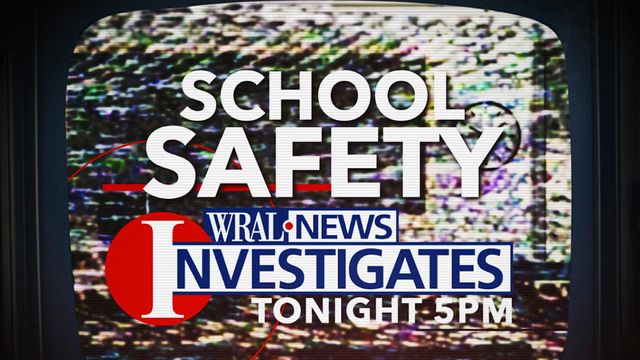As school threat arrests spike, NC tries new ways to keep students safe
After nearly every mass shooting, the number of threats skyrocket, according to law enforcement officers. That was the case in North Carolina, where the number of school threat arrests spiked in 2017-18, the same year four major public school shootings happened, including in Parkland, Fla. where 17 people died.
Posted — UpdatedCourt records show school threat arrests jumped from 35 cases in 2016-17 to 100 a year later. While many of the threats are hoaxes, some may have been real. With the school year starting, WRAL Investigates wanted to find out what new steps schools are taking to make sure students are safe.
NC school threat arrests by year
- 2014-15 – 11
- 2015-16 – 20
- 2016-17 – 35
- 2017-18 – 100
- 2018-19 – 36
"What we expect is to hear a lot about what we're doing well in Wake County but also to identify the ways we can enhance our current safety plan," Smith said. "Threats do take place from time to time – hoax threats – and we take all of our hoax threats seriously and we work closely with our law enforcement partners to investigate all threats."
Each threat cost time and money and sparked fear. As law enforcement officers and educators struggle to find the answers that will keep kids safe, they say the single best tool is good communication between students, staff, police and parents.
"We train. We prepare for the unfortunate circumstance that this could possibly happen so we are prepared," said Raleigh police Major Michael Galloway, who has two children in Wake schools. "I’m very confident, and I feel like the schools are safe."
Contracts with these private firms can be comparatively cheap, compared to other security solutions. The two school systems that employ the technology in North Carolina spend less than $15,000 a year depending on their needs. And as schools grapple with concerns over school shootings – as well as other more common threats like fights and self-harm – administrators say the technology holds promise: Identifying when teachers, counselors or law enforcement officers need to intervene before something bad happens.
Amber Cullum says she worries about the safety of her children – Bennett, 10, Zoey, 6 and Levi, 3 – but she thinks schools and law enforcement are trying their best to keep students safe.
"There are definitely times when I enter the school and I think, 'Is it really safe?'" she said. "It always heightens a little bit when something happens in our culture that makes [safety] come to the forefront of your attention."
Her son Bennett said he feels secure at school, but if something did happen, he would turn to his teachers for help, like they do during school drills.
"I would probably be like a little bit worried and want to make sure – find a way to make it not happen," he said. "I’d try to find a way to tell the teachers, ask the teachers if there’s a way we could be safe from it."
• Credits
Copyright 2024 by Capitol Broadcasting Company. All rights reserved. This material may not be published, broadcast, rewritten or redistributed.






